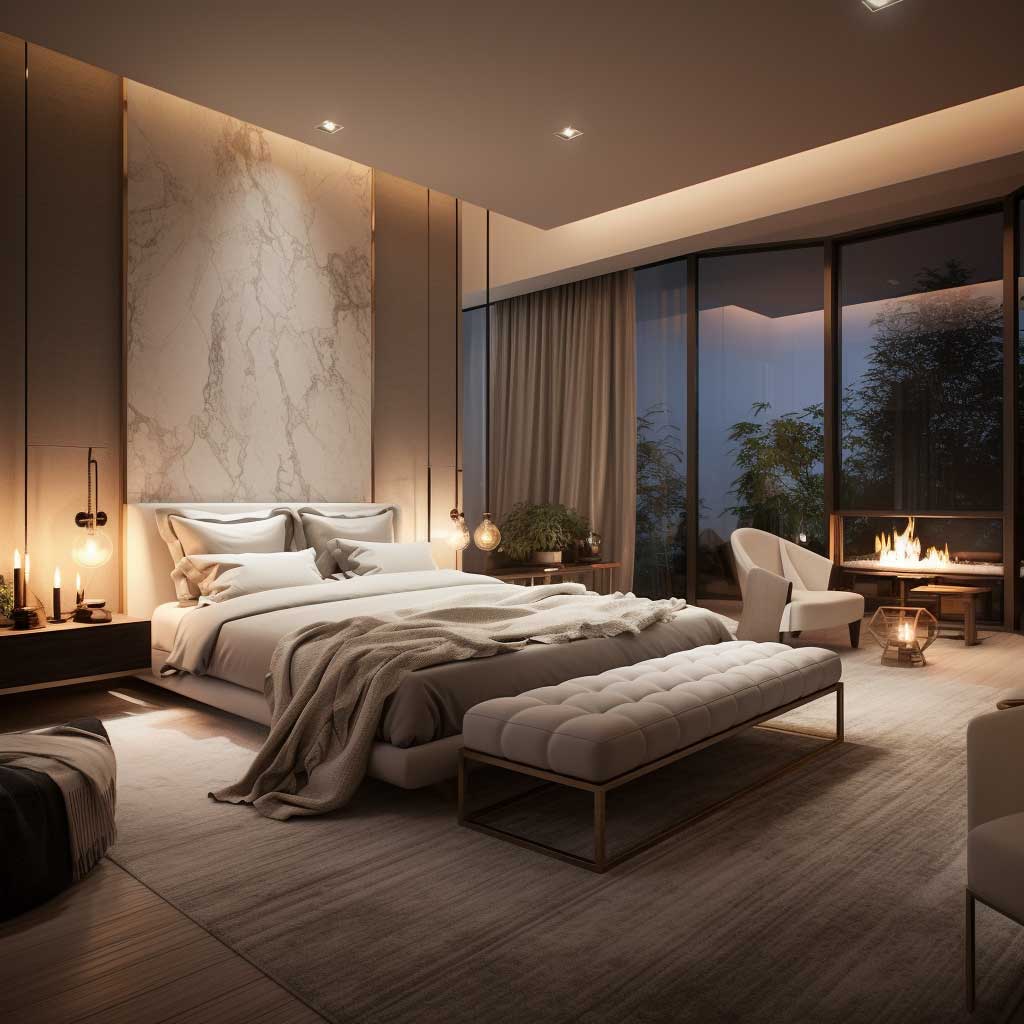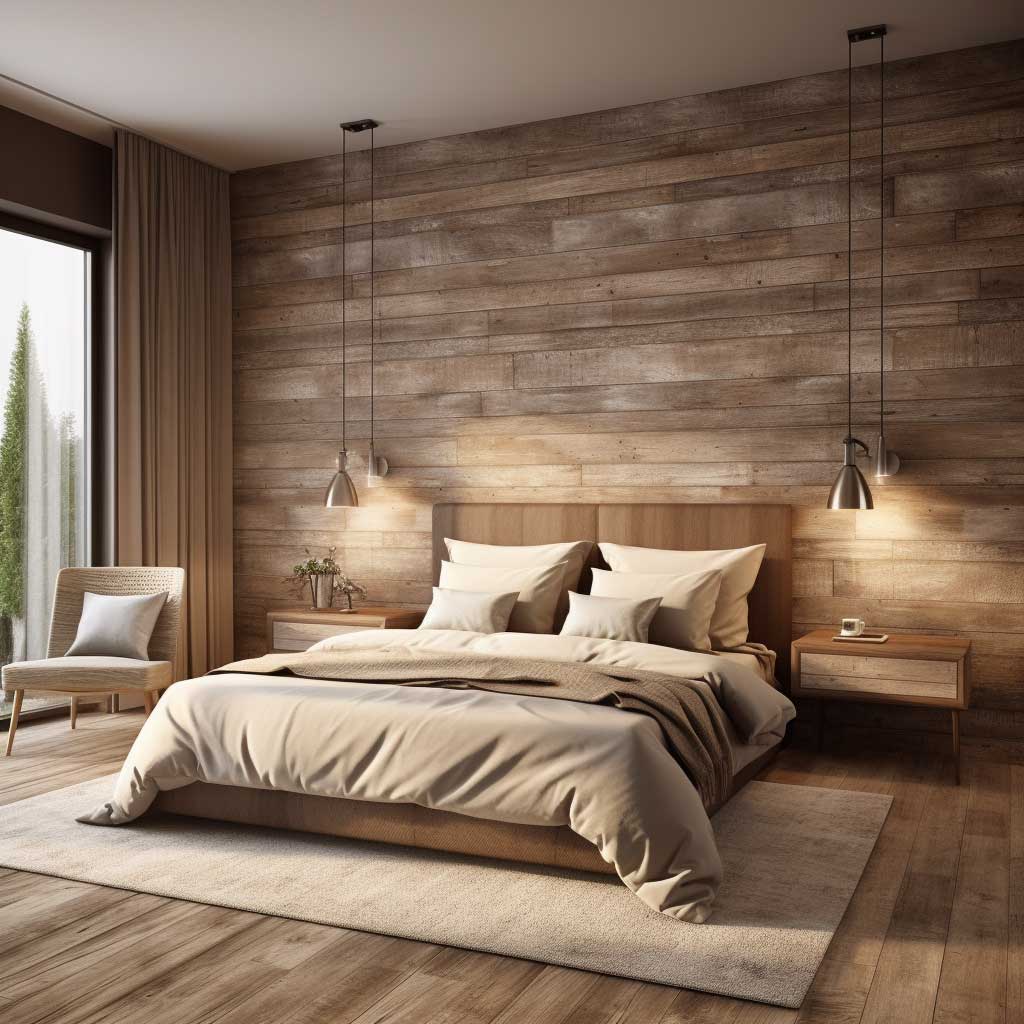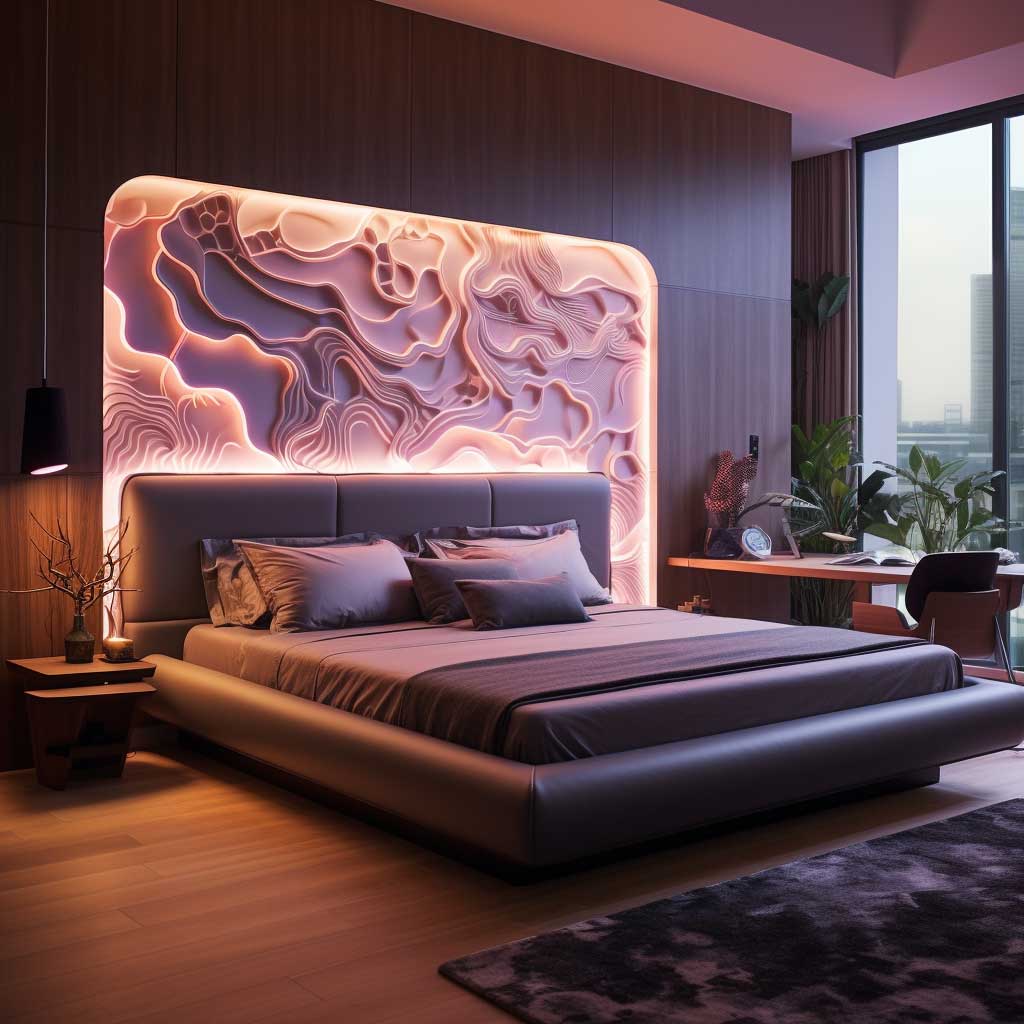The fusion of Japanese minimalism and Scandinavian functionality has given birth to the Japandi style, a design trend that’s taking the interior world by storm. Japandi style bedrooms are the epitome of tranquility, blending the serene simplicity of the East with the cozy warmth of the North. If you’re looking to transform your sleeping space into a Japandi haven, here are five ways to do just that.
Japandi Bedroom Bliss with Neutral Tones



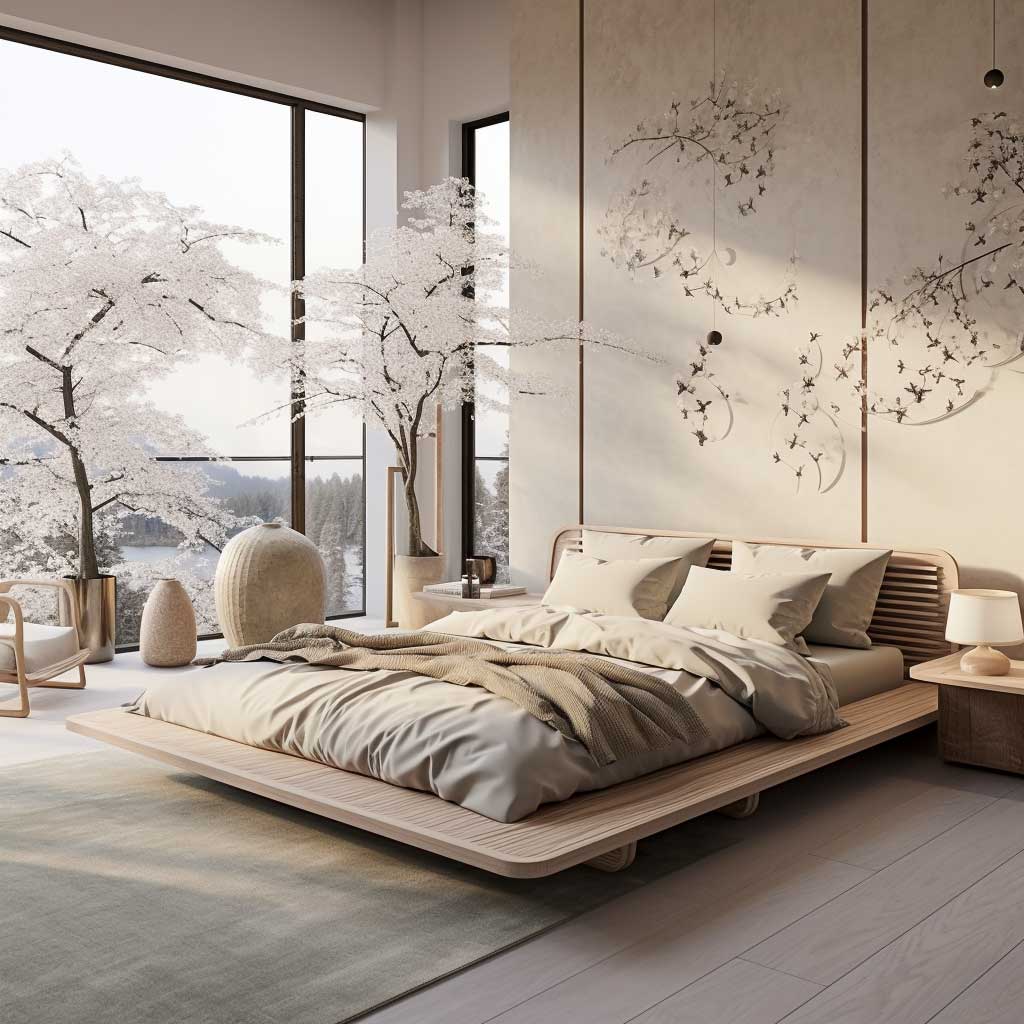
The world of interior design is ever-evolving, and one of the most captivating trends to emerge in recent years is the Japandi style. Japandi style bedrooms are a harmonious blend of two distinct cultures: Japanese minimalism and Scandinavian functionality. This fusion creates spaces that are both serene and practical, and nowhere is this more evident than in the use of neutral tones.
Neutral tones are the backbone of Japandi style bedrooms. They provide a calm and inviting backdrop, allowing the room’s architectural features and furnishings to shine. But why are these muted hues so integral to the Japandi aesthetic?
To understand this, we must delve into the philosophies that underpin both Japanese and Scandinavian design. In Japan, there’s a deep appreciation for the beauty of simplicity and the natural world. This is reflected in the traditional Japanese homes, where neutral tones like whites, beiges, and soft grays dominate. These colors are seen as a reflection of nature, reminiscent of the misty mountains, sandy beaches, and cloudy skies of the Japanese landscape.
Similarly, in Scandinavian design, there’s a love for clean lines and understated elegance. The long, dark winters of the Nordic countries have led to interiors that maximize light and space. Neutral tones help achieve this, creating bright and airy Japandi style bedrooms that are a joy to wake up in.
But it’s not just about aesthetics. Neutral tones in Japandi style bedrooms also have a psychological impact. They promote relaxation and tranquility, making the bedroom a true sanctuary from the hustle and bustle of daily life. After a long day, there’s nothing more comforting than retreating to a space that feels calm and uncluttered.
Incorporating neutral tones into Japandi style bedrooms is also incredibly versatile. These colors act as a blank canvas, allowing homeowners to inject their personality into the space through textiles, art, and accessories. Whether you prefer a pop of color or a more monochromatic look, neutral tones provide the perfect foundation.
In conclusion, neutral tones are more than just a design choice in Japandi style bedrooms. They are a reflection of the deeper philosophies of Japanese and Scandinavian cultures, emphasizing simplicity, nature, and well-being. So, if you’re looking to create a bedroom that’s both stylish and soul-soothing, consider the blissful beauty of neutral tones in the Japandi style.
Serenity Meets Functionality in Japandi Bedroom Design




Japandi style bedrooms are a testament to the idea that design can be both beautiful and functional. This unique blend of Japanese and Scandinavian aesthetics has taken the interior design world by storm, and for a good reason. Japandi style bedrooms are spaces where serenity meets functionality, creating rooms that are as practical as they are peaceful.
The concept of serenity is deeply rooted in Japanese culture. The traditional Japanese home is designed to be a haven of calm, with every element carefully chosen to promote relaxation and reflection. This is evident in the use of natural materials, the flow of space, and the emphasis on minimalism. In Japandi style bedrooms, this sense of serenity is achieved through a careful balance of design elements.
Functionality, on the other hand, is a hallmark of Scandinavian design. The Nordic countries have a long history of creating homes that are both stylish and practical. This is born out of necessity, with the harsh climate and limited resources of the region influencing design choices. In Japandi style bedrooms, functionality is seen in the smart use of space, the choice of durable materials, and the incorporation of multi-purpose furniture.
But how do serenity and functionality come together in Japandi style bedrooms? The answer lies in the thoughtful integration of design principles from both cultures. For instance, the use of sliding doors or screens, a common feature in Japanese homes, can be incorporated into a Scandinavian setting to create flexible spaces that can be easily reconfigured. Similarly, the Scandinavian love for built-in storage can be combined with the Japanese principle of ‘ma’ or negative space, ensuring that Japandi style bedrooms are both clutter-free and functional.
Another key aspect of Japandi style bedrooms is the emphasis on craftsmanship. Both Japanese and Scandinavian cultures value the skill and artistry of hand-made items. This is reflected in the choice of furnishings and accessories in Japandi style bedrooms, with artisanal pieces taking center stage.
In conclusion, Japandi style bedrooms are a masterclass in design harmony. They show that it’s possible to create spaces that are both serene and functional, without compromising on style or comfort. If you’re looking to redesign your bedroom, consider the Japandi style, where serenity truly meets functionality.
Minimalist Elegance of Japandi Bedroom Decor
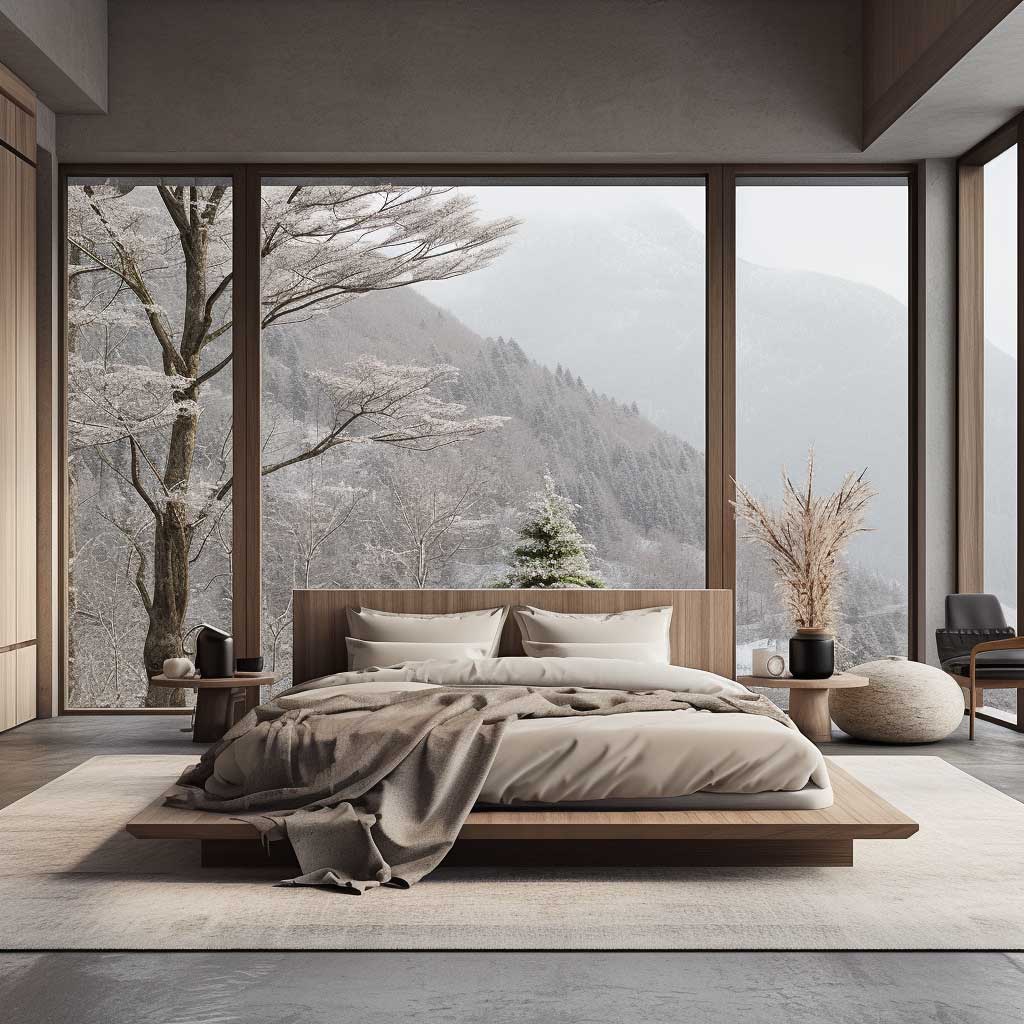

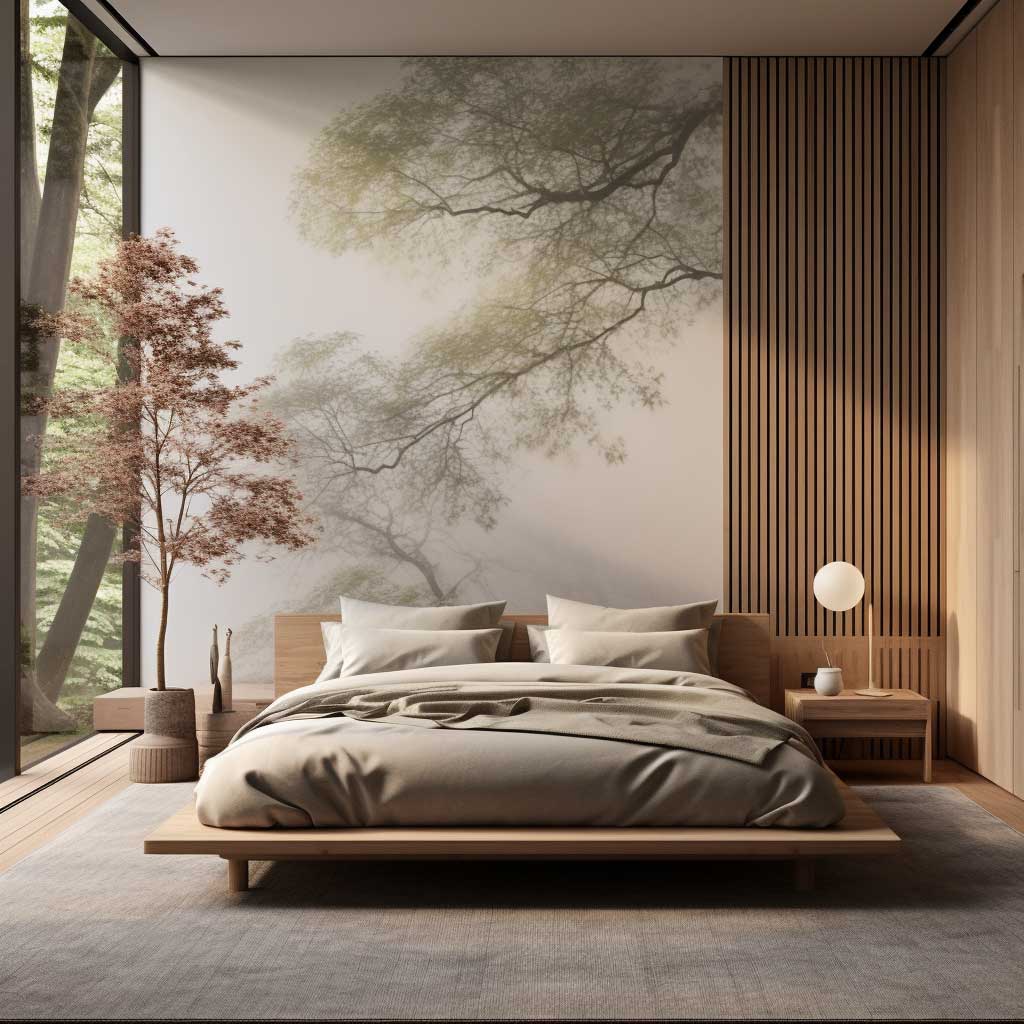
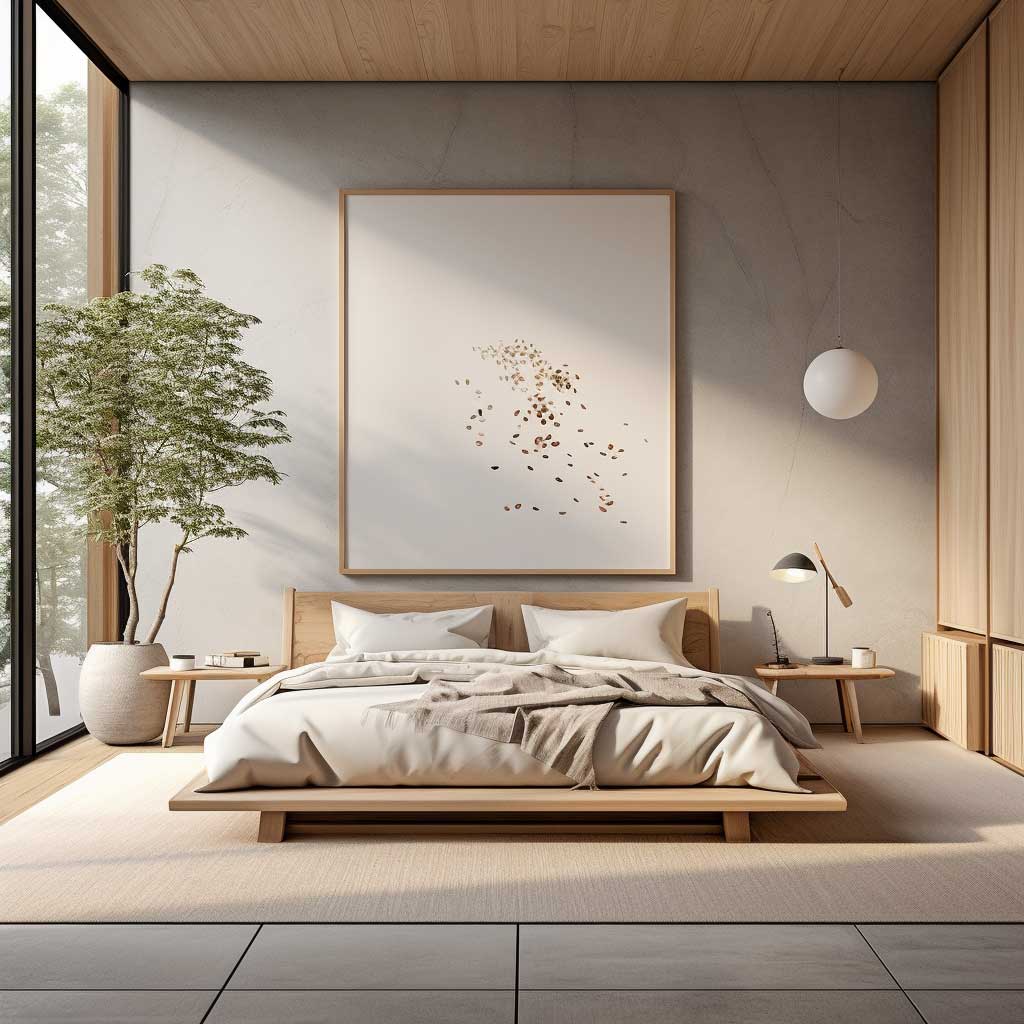
In the realm of interior design, minimalism has been a dominant trend for years. However, the rise of Japandi style bedrooms has introduced a new twist to this concept. Japandi is not just about minimalism; it’s about minimalist elegance. It’s a style that combines the best of Japanese and Scandinavian design principles to create spaces that are understated yet sophisticated.
Japandi style bedrooms are a masterclass in restraint. Every element in the room, from the furniture to the textiles, is carefully chosen for its aesthetic and functional value. There’s no room for clutter or unnecessary items. Instead, the focus is on creating a space that is harmonious and balanced.
This minimalist approach is deeply rooted in Japanese culture. The Japanese philosophy of ‘wabi-sabi’ celebrates the beauty of imperfection and transience. In Japandi style bedrooms, this is reflected in the choice of materials and finishes. Natural woods, soft textiles, and hand-made ceramics are favored, each with its unique imperfections and character.
Scandinavian design, on the other hand, is known for its clean lines and functional elegance. In Japandi style bedrooms, this is seen in the choice of furniture. Pieces are often low-slung and streamlined, with a focus on comfort and utility. The color palette is also typically muted, with whites, grays, and soft pastels dominating.
But what truly sets Japandi style bedrooms apart is the attention to detail. Every item in the room, no matter how small, is chosen with care. This meticulous approach ensures that the space feels curated and cohesive, with each element working in harmony with the others.
In conclusion, the minimalist elegance of Japandi style bedrooms is a testament to the power of thoughtful design. It shows that it’s possible to create spaces that are simple yet sophisticated, where every item has a purpose and a place. If you’re looking to embrace minimalism in your home, consider the Japandi style, where elegance and simplicity go hand in hand.
Conclusion
Embracing the Japandi style in your bedroom is more than just a design choice; it’s a lifestyle statement. It’s about valuing simplicity, functionality, and a deep connection with nature. By incorporating these 3 elements into your bedroom, you’re not just creating a space that looks good; you’re crafting a sanctuary that feels good, promoting rest, relaxation, and rejuvenation.

